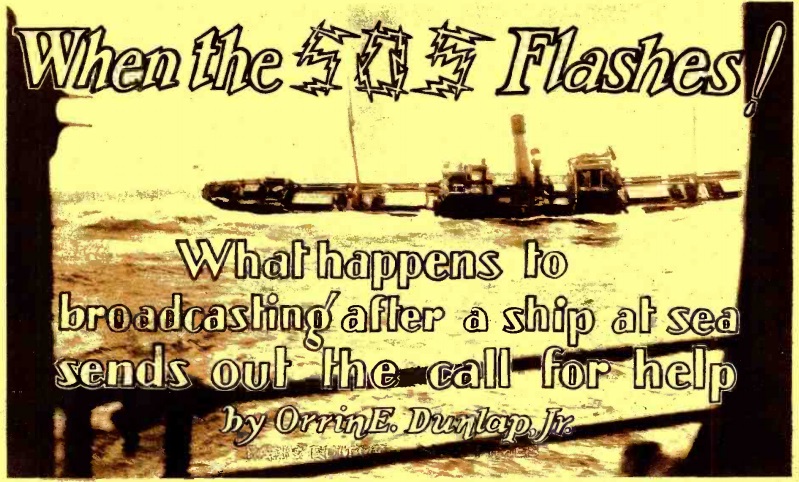 Ninety years ago this month, the April 1928 issue of Radio News carried this article explaining some of what happened when an SOS was heard on the airwaves.
Ninety years ago this month, the April 1928 issue of Radio News carried this article explaining some of what happened when an SOS was heard on the airwaves.
As soon as an SOS was heard, coastal stations WNY in Brooklyn or NAH at the Brooklyn Navy Yard would immediately flash the message “QST DE NAH QRT SOS,” meaning that all stations–including broadcasters–along the Eastern Seaboard would need to immediately silence their transmitters. Network programs would continue over the wire to stations further west, but the key stations themselves would be silent. As the article pointed out, this sometimes led listeners who tuned in late to think something was wrong with their receivers. But for the radio buffs, this added some opportunities.
First of all, with all of the New York stations dark, listeners in that city had some DX opportunities. Stations such as KDKA and those further west would still be on the air.
And “broadcast listeners who are able to read the Continental Morse code and the quick flashes of radio abbreviations can often follow the rescue arrangements; for the broadly-tuned signals will penetrate into the upper reaches of the broadcast band.” The article noted that NAH used spark for these transmissions, exactly because the signal covered more bandwidth and thus had a better chance of being picked up. Similarly, under the radio regulations, the ship in distress was allowed to have its “transmitting set adjusted in such a manner as to produce a maximum of radiation irrespective of the amount of interference which may be caused.”

According to _____ the international code for distress, SOS is the only string of letters that are not pause separated, but per my reply below, there definitely IS a pause between strings. That is the official distress signal-SOS, pause, SOS, pause, SOS, and etcetera. ALWAYS a pause between strings but NEVER between letters.
I do have to give this spammer credit for writing a coherent on-topic reply. However, the link was totally off topic, so it’s been removed.